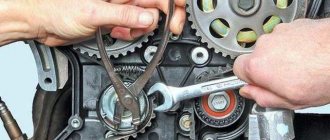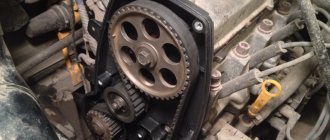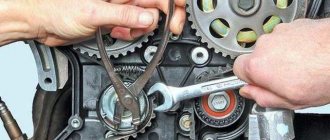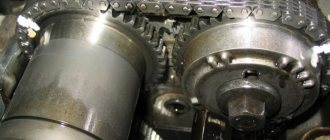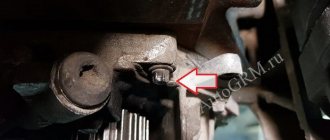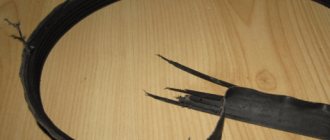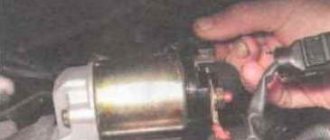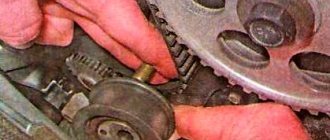The Hyundai Accent sedan is a reliable and unpretentious car. But it may also have problems with the generator, especially at high mileage. In addition, periodic replacement of the alternator belt and its roller is required. This article tells how to identify problems with the belt and tighten it, and also talks about replacing the belt with a roller, the generator itself and its repair.
Selecting an alternator belt for Hyundai Accent
It is recommended to replace the alternator belt on this vehicle approximately every 60,000 kilometers. Sometimes it may be needed a little earlier or later. For replacement, it is advisable to purchase an original product. Its catalog number is 25212-26021.
The belt is poly-V-ribbed, its size is 850 mm (length). In this case, you should also buy a tension roller. In addition to original parts, you can take high-quality analogues, which may cost less.
Self-tensioning of the alternator belt
The Accent generator belt should be tensioned as it weakens, if the product itself does not yet require replacement due to timing and condition. You can do this procedure yourself. Before tightening, you should inspect the element for damage and oil leaks. Then it needs to be replaced.
To tighten the alternator belt on a Hyundai Accent, you need to:
- Slightly loosen the bolt that secures the generator to the oil pump. To do this you will need a 12mm wrench or socket.
- Loosen the mount of the electric generator on the adjustment bar.
- To tension the belt, you need to rotate the adjustment bolt until the element takes the correct position and the sagging disappears.
- Tighten the bolt and nut on the generator with a socket or wrench.
- Turn the crankshaft by the pulley 2-3 turns.
- Check how well the belt is tensioned. If bad, repeat the procedure. If the tension is excessive, release it.
Why are timing marks needed?
The timing marks are marks along which the timing belt is adjusted, as well as the drive belt is replaced. This element is quite important because it directly affects the operation of the power unit.
Timing diagram:
1. Timing chain 2. Drive chain guide 3. Drive chain lever 4. Automatic drive chain tensioner 5. Drive chain cover 6. Accessory drive belt idler pulley 7. Water pump gasket 8. Water pump 9. Water pump pulley 10. Crankshaft pulley
What happens if, when replacing a belt, you set the marks incorrectly or don’t set them at all? In this case, you can knock down the gas distribution mechanism, which will lead to many problems. Namely:
- Since the gas distribution has been disrupted, the injection and release of exhaust gases will be carried out incorrectly. Subsequently, the engine may start to stall, stall, fail to start, or consumption may increase. In turn, this can lead to consequences, such as increased wear, burnout of the valve mechanism and piston group, and others.
- Everyone remembers what happens when the timing belt breaks - valve bending. This happens because the gas distribution process is disrupted and the pistons hit the valves, which are subsequently deformed. The exact same principle works in this case. A broken timing mechanism will cause the piston group to fight against the valves, which will simply deform them.
Shifting the timing mark when changing a belt or adjusting will result in fuel being injected too early or too late. The consequence of this may be flooding of the spark plugs or suction of exhaust gases into the combustion chamber.
In addition to the induced consequences, others may also arise, which can also lead to increased wear and tear of power unit parts or other problems.
How to change the Hyundai Accent alternator belt
Replacing the Accent alternator belt must be carried out according to regulations or if there are external defects on it. You can replace the element yourself. It should be changed together with the tension roller. It is recommended to work in a garage.
To change the belt you need to:
- Place the car in the garage and securely secure it to prevent it from rolling away.
- Remove the engine splash guard on the right side.
- Loosen the fastening elements of the electric generator using a wrench or a 12mm socket.
- Turn the adjusting bolt to loosen the belt.
- Move the generator slightly towards the cylinder block.
- Remove the belt.
- Install a new part.
- Adjust tension.
- Reassemble all previously removed elements in reverse order.
When is it necessary to replace?
Engine belts are quite durable and rarely need to be replaced. There are no clearly defined deadlines establishing the procedure for replacing belts on a Hyundai Accent - they change in the event of excessive stretching of the belt, cracks appearing on it, delamination and loosening of the surface. It is believed that it is necessary to systematically diagnose the condition of belts after a mileage of 60 thousand km. Since replacing belts is quite simple, you can purchase replacement kits in advance and always carry them with you.
Poly V-belts for the Hyundai Accent engine have a long service life and are rarely changed. More often than not, the power steering belt is the first to fail. If the power steering belt is faulty, an unpleasant chattering noise may appear under the hood. In such a situation, adjustment often helps, but if the belt is too stretched, it should be replaced. When replacing the power steering belt, you will also have to remove the alternator belt (which, in case of severe wear, can also be replaced).
How to replace a roller
The tension roller should be changed along with the belt. This will simplify the work, since it will not have to be done several times.
In addition, simultaneous replacement of parts will ensure their correct and long-term operation. The procedure is similar to replacing the belt, but after removing it, you also need to remove the roller. Then you should install a new spare part, install the belt and adjust the tension.
Engine Hyundai Accent 1.5 liter characteristics, timing device
The Hyundai Accent 1.5 liter engine of the G4EC model, which is mainly found on the Accent, has a rather interesting design and is very reliable. Gasoline aspirated with a power of 102 hp. with proper operation, it can easily travel 300-400 thousand kilometers. Moreover, the engine is very repairable.
Today we’ll talk about the motor in more detail.
In-line engines of the “ALFA” series have a huge number of modifications. These are four-cylinder, four-stroke, liquid-cooled gasoline engines with an in-line vertical cylinder arrangement and a 16-valve cylinder head.
The engine has hydraulic compensators and does not require valve clearance adjustment.
Engine Hyundai Accent 1.5 liters
The Hyundai Accent engine cylinder block is a single cast iron casting that forms the cylinders, cooling jacket and oil line channels. The blocks are made of special high-strength cast iron, the cylinders are bored directly into the body of the block.
The cylinder block has special bosses, flanges and holes for fastening parts, assemblies and assemblies, as well as channels for the main oil line. At the bottom of the cylinder block there are five crankshaft main bearing supports with removable caps that are bolted to the block.
The engine main bearing caps are machined together with the block and are not interchangeable.
Cylinder head Accent 1.5 liter
The Accent 1.5 cylinder head, made of aluminum alloy, is common to all engine cylinders. In the lower part of the cylinder head, channels are cast through which fluid circulates to cool the combustion chambers.
Valve seats and guides are pressed into the head. The intake and exhaust valves have one spring each, fixed through a plate with two crackers. The G4EC engine has two camshafts.
Quite an interesting design, see the photo below -
1 – bolt securing the camshaft gear pulley; 2 – camshaft oil seal; 3 – front camshaft bearing cover; 4 – intake camshaft; 5 – intake camshaft drive chain; 6 – exhaust camshaft; 7 – hydraulic valve pusher (hydraulic compensator);
8 – cylinder head
Timing device Hyundai Accent 1.5 liter
The timing mechanism drive is combined, since it uses both a timing belt and a small chain at the same time. The belt transmits torque from the crankshaft pulley to one camshaft, and on the opposite side there is a small chain that connects, through sprockets, the second camshaft, thereby synchronizing the timing.
Replacing the timing belt on an Accent 1.5 liter is required once every 50 thousand kilometers, the chain must be changed once every 100 kilometers. Usually the rattling of a stretched chain is heard already at 80-90 thousand mileage.
Timing diagram for Hyundai Accent 1.5 liter below.
1 – toothed pulley of the exhaust camshaft drive; 2 – bolt; 3 – intermediate roller; 4 – timing belt; 5 – mark on the front cover of the cylinder block; 6 – mark on the crankshaft toothed pulley; 7 – gear pulley of the engine crankshaft; 8 – tension roller bolt; 9 – tension roller spacer; 10 – tension roller spring; 11 – tension roller; 12 – mark on the toothed pulley;
13 – mark on the camshaft support
Hyundai Accent 1.5 liter engine characteristics
- Working volume – 1495 cm3
- Number of cylinders – 4
- Number of valves – 16
- Cylinder diameter – 75.5 mm
- Piston stroke – 83.5 mm
- Timing drive - belt (DOHC)
- Power hp (kW) – 102 (75) at 5800 rpm. per minute
- Torque – 134 Nm at 3000 rpm. per minute
- Maximum speed – 181 km/h
- Acceleration to the first hundred – 10.5 seconds
- Fuel type – gasoline AI-92
- Compression ratio – 10
- Fuel consumption in the city – 9.9 liters
- Fuel consumption on the highway – 6.1 liters
- Fuel consumption in the combined cycle – 7.5 liters
In addition to the 5-speed manual, in combination with this power unit you can also find a 4-speed automatic transmission.
Naturally, with a hydromechanical automatic transmission, fuel consumption is higher and the dynamics are worse.

